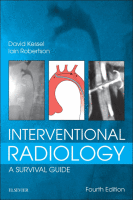Physical Address
304 North Cardinal St.
Dorchester Center, MA 02124

Purpose Covered stents provide an impermeable conduit and are used in both the vascular and non-vascular system. In the vascular system, they are called ‘stent grafts’. Vascular The most important indications are treating aneurysms and arterial rupture. Other indications are…

Purpose Stents are scaffolds used to maintain luminal patency in many systems, e.g. vascular, biliary, gastrointestinal and tracheobronchial. They act by exerting an outward radial force to overcome stenoses/occlusions and elastic recoil after angioplasty. Stents may also reduce the likelihood…

Purpose The only way to be certain a balloon is being used at the correct pressure is to use an inflation handle with a pressure gauge ( Fig. 19.1 ). Besides precision, the inflation handle allows you to effortlessly generate…

Purpose of equipment These are mostly used to dilate blood vessels but can be equally useful for strictures in other systems. Description Although there is a huge variety of different angioplasty balloons, they all boil down to a straight catheter…

Purpose Snares are essentially wire loops, which are used to capture/manipulate/remove wires, catheters and various other ‘foreign bodies’. Description All snares are variations on the good old cowboy lasso, in other words, they have a loop that can be rotated…

Purpose Even the strongest angiographer cannot hand inject rapidly enough for aortic runs. Pump injectors are used to deliver a rapid controlled bolus of contrast while you stand back and reduce your radiation dose. You’re Reading a Preview Become a…

Taps Purpose Just as with domestic taps, these are turned on and off to control flow and there is even a mixer version. Description Only two types of tap are of importance but there are some important caveats: Two-way taps…

Sheaths and guide-catheters are designed to allow the coaxial passage of other devices. There is overlap between the structure and function and recently, introducer guides have developed as a crossover group. There are differences in sizing and usage, so the…

Purpose Microcatheters allow catheterization and delivery of embolic material to the smallest and most tortuous of vessels ( Fig. 13.1 ). Microcatheters are ideal for super-selective hepatic, visceral and peripheral catheterization. You’re Reading a Preview Become a Clinical Tree membership…

Purpose Non-selective catheters with multiple sideholes are used for rapid injection of contrast into large–medium-sized arteries. Selective catheters may have sideholes or just a single endhole; they are shaped to allow the catheter to enter branch vessels or direct guidewires…